Cement vs Concrete: Here’s The Difference
Yes, there is a difference between concrete and cement.
The terms are confusing, especially with so many brands of mixes.
Some people use the word concrete when they mean cement, and vice versa. And since the terms are used interchangeably, it may seem like they are the same material.
As someone who works with concrete almost daily, I often get asked if there is a difference. I wanted to answer it in detail here to help end some confusion.
What Is Cement?
Cement is the main ingredient in concrete, and concrete can’t exist without cement.
It is a binding agent that turns into a paste when combined with water. But it needs an aggregate added to achieve that binding effect.
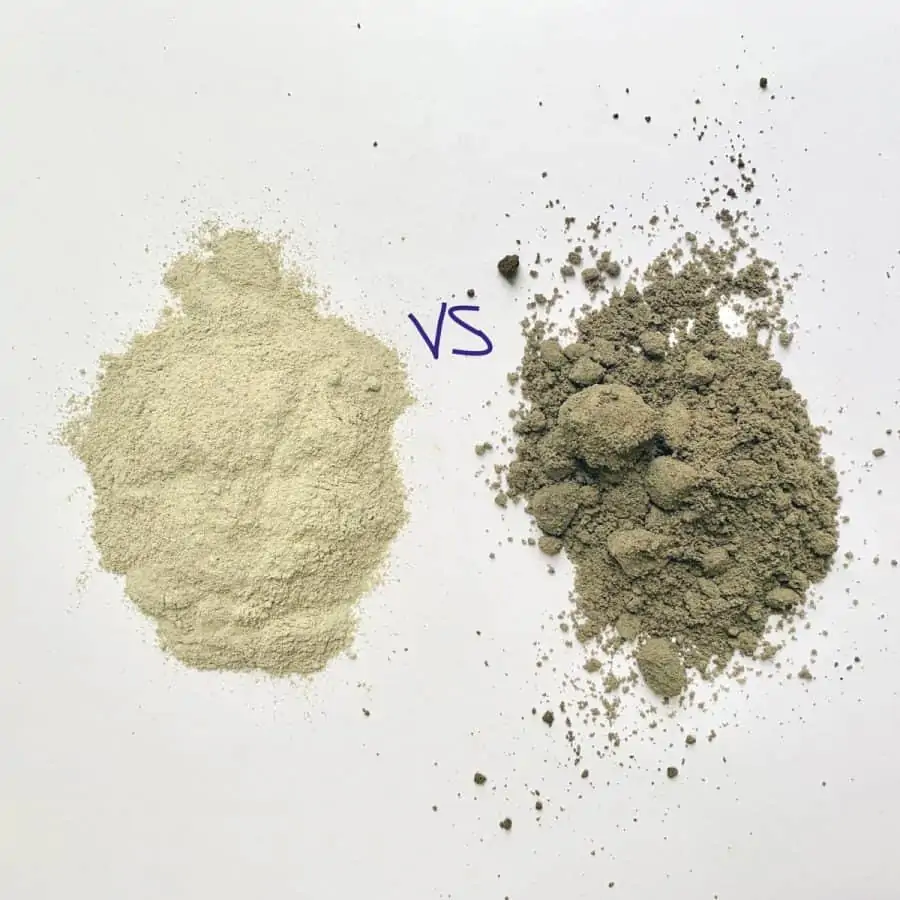
Cement and water alone will not bind (or glue) anything together.
Cement will harden because the compounds in cement will bond to water molecules with the addition of water.
It goes through a hardening process through this chemical reaction called hydration.
Cement paste, with sand or a coarse aggregate like gravel or crushed stone, will glue together to produce a concrete mixture.
In summary, concrete is a material that contains cement combined with any aggregate.
The Ingredients In Cement
The most common type of cement is Portland cement. In fact, it is used worldwide.
The name portland cement is a misnomer, as it is not the brand name of a cement mix; it’s actually a generic term. Portland cement also doesn’t come from Portland, Oregon.
Portland cement was named after a type of limestone called Portland stone from the Isle of Portland in Dorset, England.
In addition to limestone, portland cement’s other key ingredients are clay and silica or sand.
Sometimes, these will be combined with smaller amounts of iron oxide, iron ore, fly ash, shale, or gypsum. The elements within the mix depend on the region.
During production, they will place these ingredients in a kiln, heat them to a very high temperature, and grind them to a fine powder. The final product is cement.
Types of Cement
Per the Portland Cement Association, there are eight types of portland cement. They are each made to meet different physical and chemical requirements.
1. Type 1
This is general purpose cement suitable for most uses.
2. Type II
A cement used for structures in water or soil containing moderate amounts of sulfate.
3. Type II (MH)
This cement is moderately sulfate resistant and also generates moderate heat during curing.
4. Type III
At an early state, this cement provides early strength, typically in a week or less.
5. Type IV
Cement that moderates heat generated by hydration used for massive concrete structures such as dams.
6. Type V
This type of cement can resist chemical attack by soil and water high in sulfates.
7. Types IA, IIA, I(MH)A and IIIA
These cements are used to make air-entrained concrete. They have the same properties as Types I, II, II(MH), and III, except that they have small quantities of air-entraining materials combined with them.
-SOURCE PCA
In this article, you can dig deeper into different mix types; I tested 6 different concrete mixes to compare color, texture, sheen, etc., between them.
And If you haven’t read this article yet, you may want to check out how be safe when working with concrete.
Aggregate Materials In Concrete
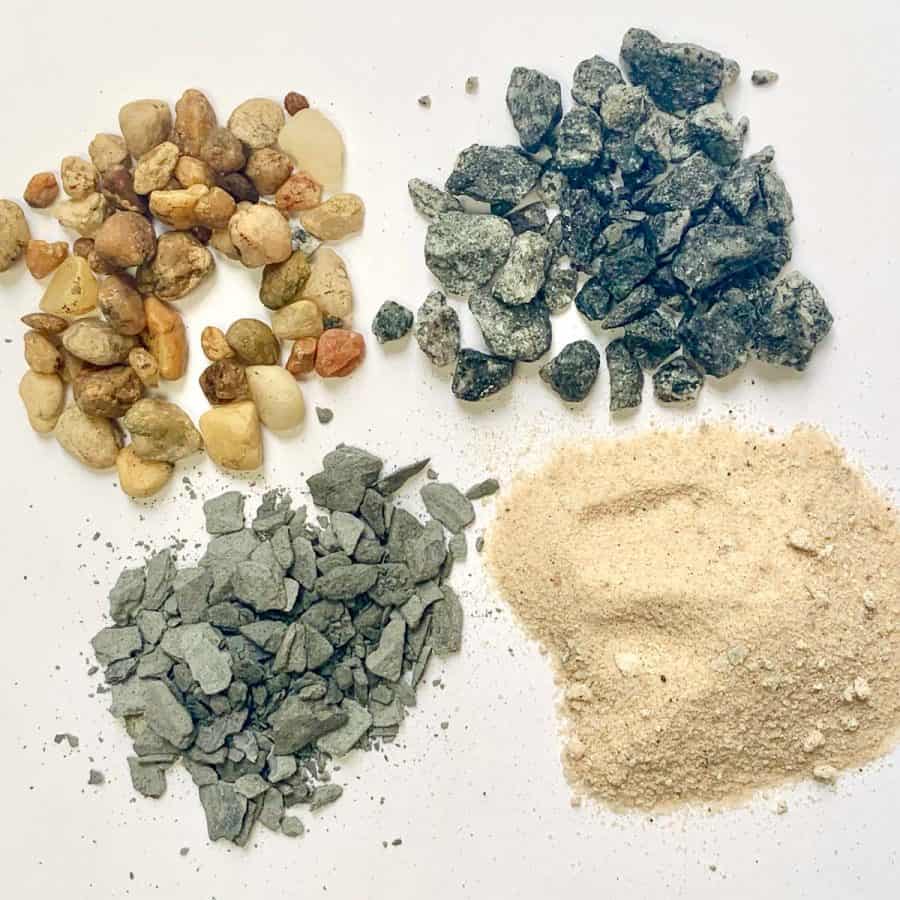
Although sand is the most common aggregate in cement, did you know you can use just about anything as an aggregate?
This article will help you calculate how much aggregate to use in your own Portland cement DIY concrete crafts projects.
Some concrete mixtures contain just one of these types or can be a mixture of aggregates.
These are some ideas for some of the less uncommon aggregates you can use. You’ll see these used in DIY/ crafts projects.
These are the typical aggregates that are in concrete.
Large Aggregates:
• Crushed stone
• Gravel
Small Aggregate:
• Pea gravel
Fine Aggregate:
• Sand
Alternate Aggregates:
• Sanded beach glass
• Fabric
• Peat moss
• Perlite
• Vermiculite
• Newspaper
Check out this hypertufa planter tutorial for types of aggregate to use in hypertufa mixes and cement mixture ratios.
Uses For Concrete As a Construction Material
Concrete is an incredibly durable material that is both inexpensive and widely available.
It makes it easy to see why it’s such a popular building material.
Construction projects use concrete for structures that support buildings, walls, and even bridges.
Also, sidewalks, driveways, and patios are made from concrete.
Typical Uses Of Concrete In DIY Projects

Concrete is cheap and widely available, so DIY’ers love using it for many types of small projects you can think of.
Some DIY items you can make are stepping stones, round planters, side tables, drink coasters, candleholders, and more!
Typically, when doing smaller projects, you’ll want to look for cement or concrete mixes that either have sand pre-mixed or you can add sand yourself.
You should avoid a mix with larger aggregates in them.
The reason is that smaller projects typically use molds with narrow cavities, and the mix needs to flow into the voids. So look for mixes that only contain sand.
Is Mortar Different Than Cement or Concrete?
Mortar is generally the same as cement because it contains the same ingredients. However, mortar mixes are often formulated to be quite thick.
Mortar has a much higher cement ratio than concrete and can accept much more water.
This texture creates a good bond between bricks and other masonry products.
So, as you can see, there aren’t any significant differences between concrete, cement, or even mortar, just an ingredient overlap.
Things To Know About Mixes Available At Your Local Store
Shopping for concrete mixes at the store can be confusing because proper terms are not used in the labeling when it comes to branding.
Each manufacturer will use slightly different materials, especially regarding admixtures like plasticizers (better flow) or accelerators (speed up set or cure time).
Here are some tips to help you understand what to look for in selecting a mix:
- Some mixes come quick-setting.
- Not all mixes that are quick setting are quick-curing.
- Depending on the project, cement and sand may be much stronger than many concrete mixes.
- You can buy products that will help slow down the set time of concrete.
- You can also buy products to improve flowability, using less water and strengthening the concrete.
- Typically, bags labeled “cement” won’t have any aggregate, and a mix labeled concrete usually has aggregate.
Get detailed help here on choosing the best mix for your project.
And for those who live outside the US or Canada, get recommendations on the best mix in your location.
You may also be interested in how to keep plants healthy in concrete planters, and which plants thrive in them.
Cement vs Concrete FAQs
Don’t forget to Pin it for later!

Don’t forget to Pin it for later!

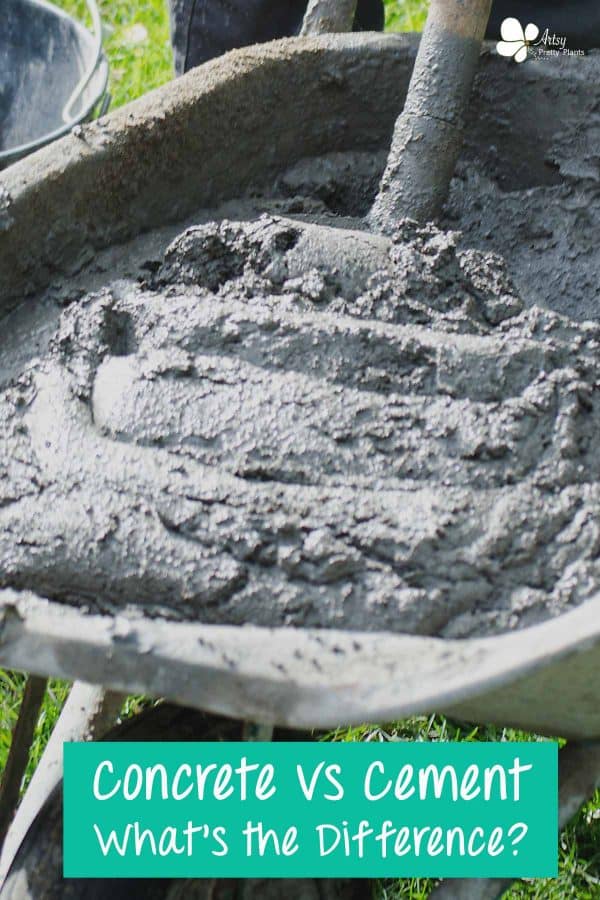

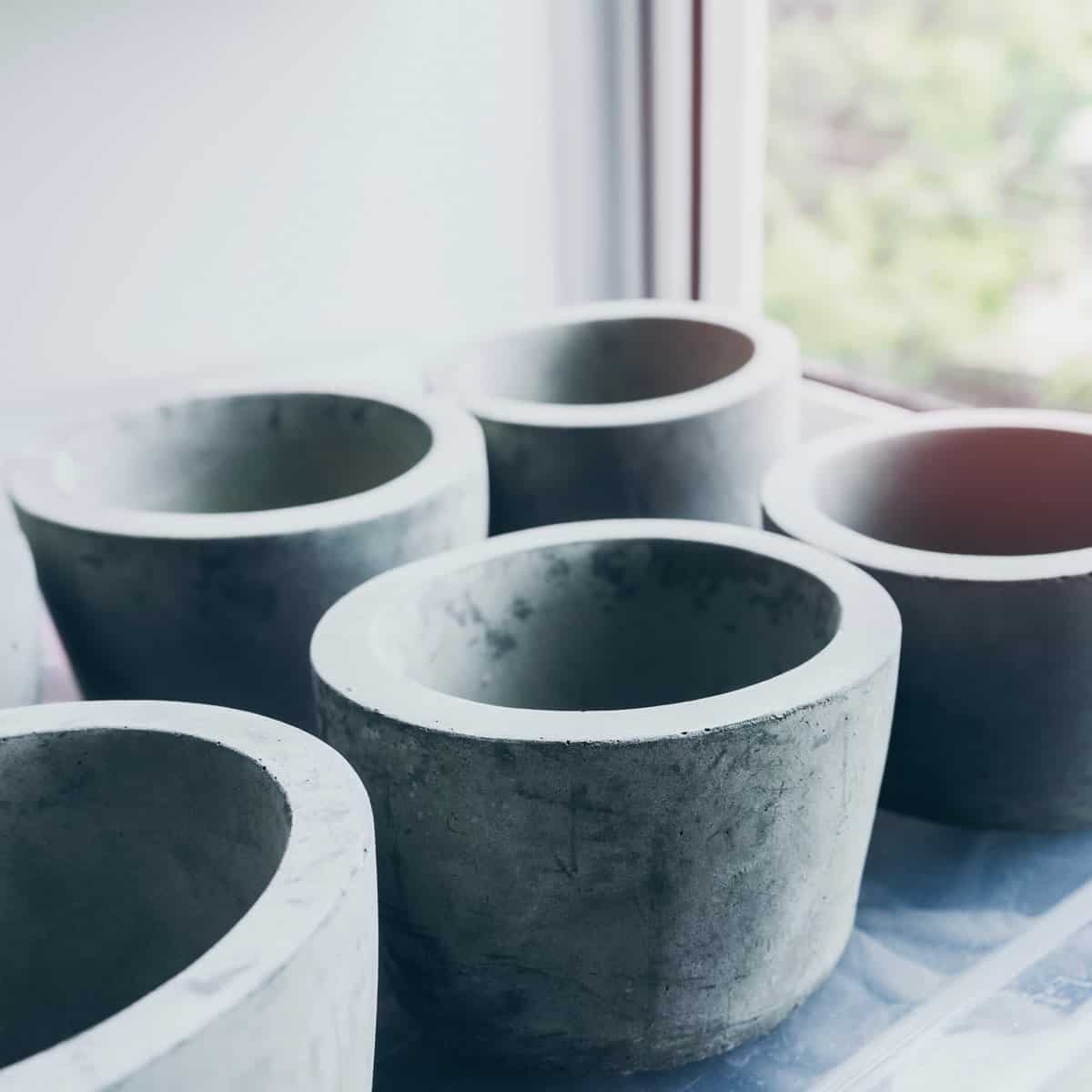
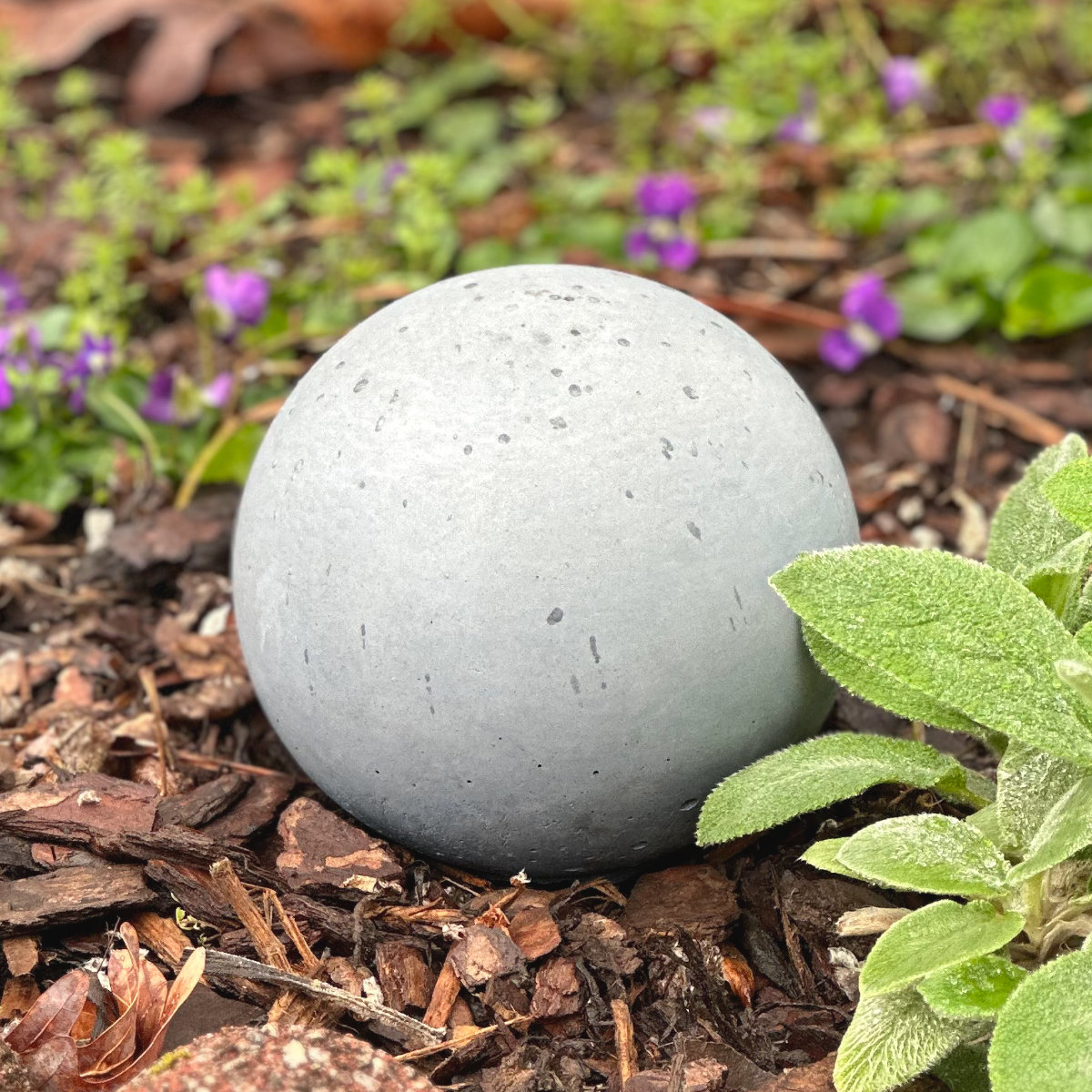

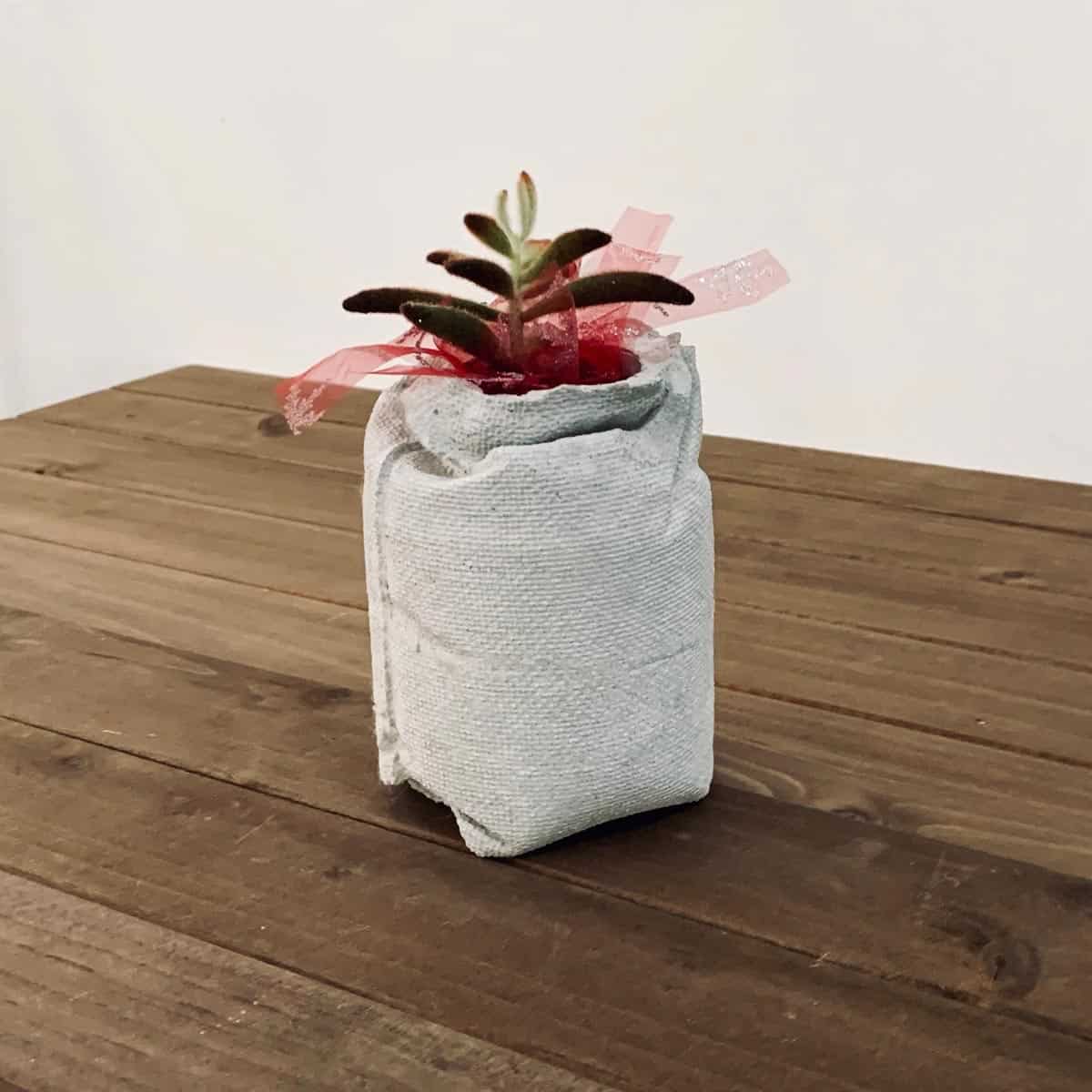


Found your blog while searching for a Youtube tutorial on how to make my own cacti planters. Really getting into your posts and can’t wait to give my first mold a go! Loving all the brain food.
Hi Megan,
Oh good, I’m glad you found it. Good luck with the mold!
Hi, found your blog on pinterest while searching for concrete accents cement DIY crafts and have top say this is the best explanation of difference between cement and concrete that I have read so far. Easy to understand and detailed. So glad I came across this article. Thank you so much for this blog. Gonna go reading more here now!
Cheers,
Ruchi
Great article! I’m trying to find a bag that isn’t 95 pounds to use for Hypertufa. Thanks for the help!
Ah, yes, I feel your pain- literally. :0) If you have an Ace hardware near you, they sell a 45 or 50lb bag. I can’t get it in the store, but am able to order it online and pick up. Other small hardware stores may also carry it.
Gostei
Bonjour ,
Enfin quelqu un qui m explique bien ,clairement les bases essentielles sans en perdre son latin
Merci beaucoup …
Allez je construis ma maison ?
Thank you so much. I will never be a cement/concrete artist but use thin set mortar for mosaics.